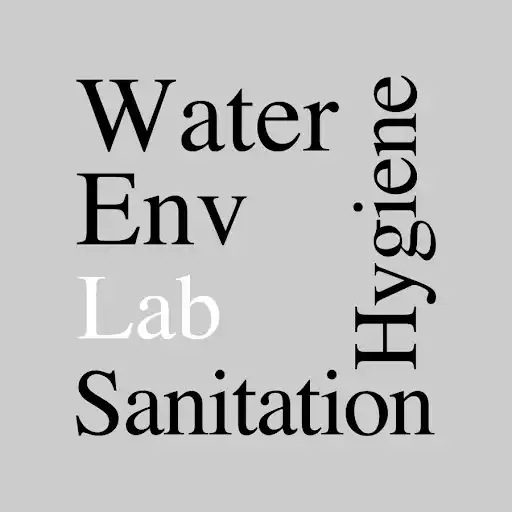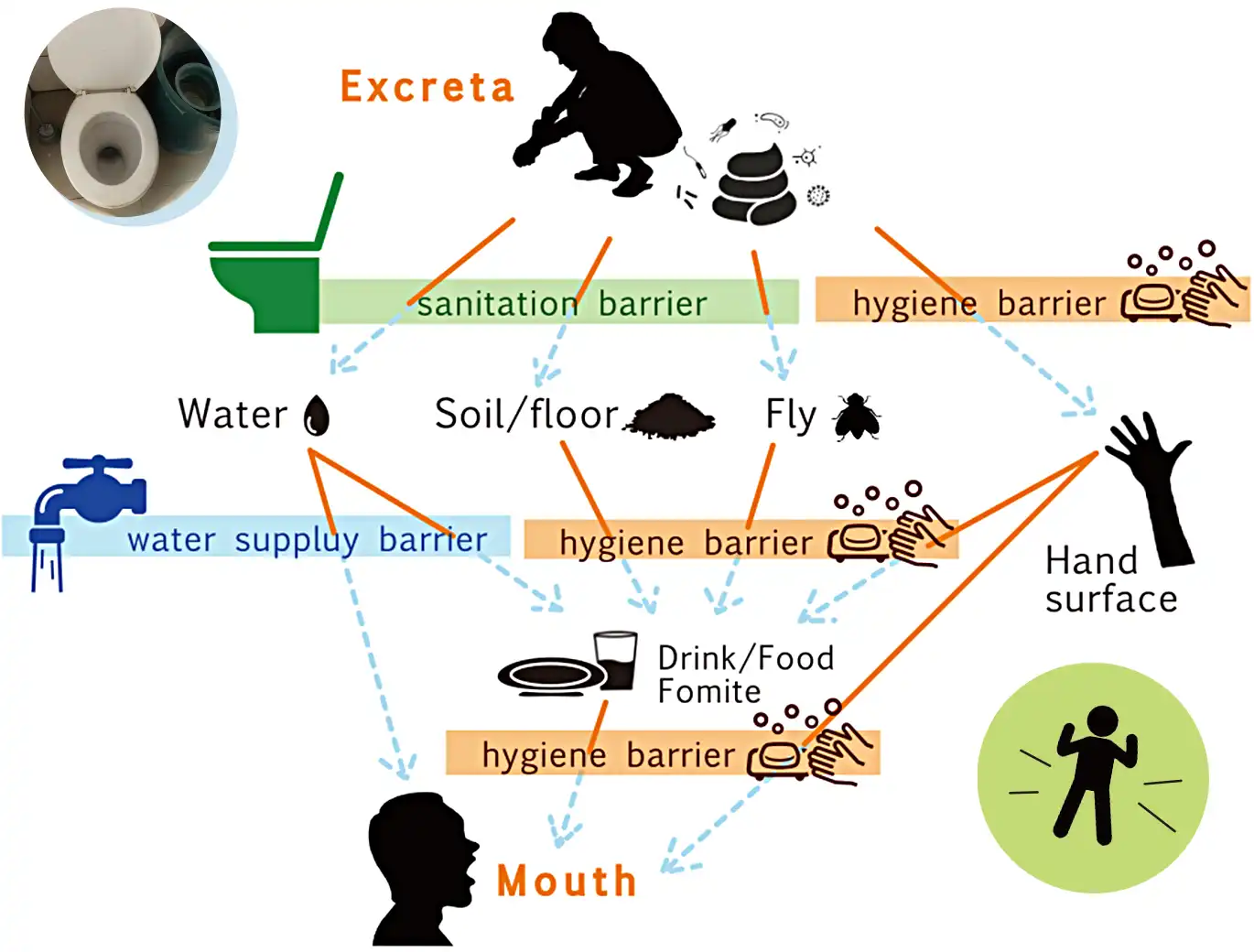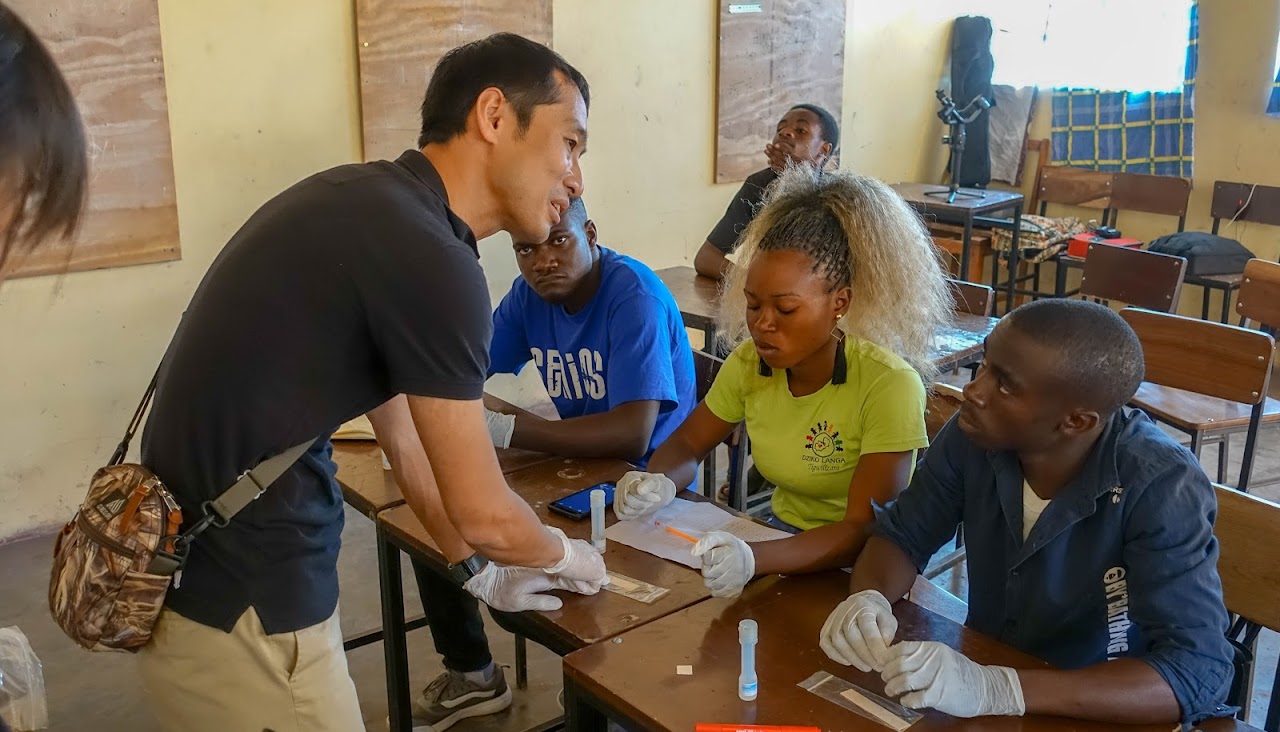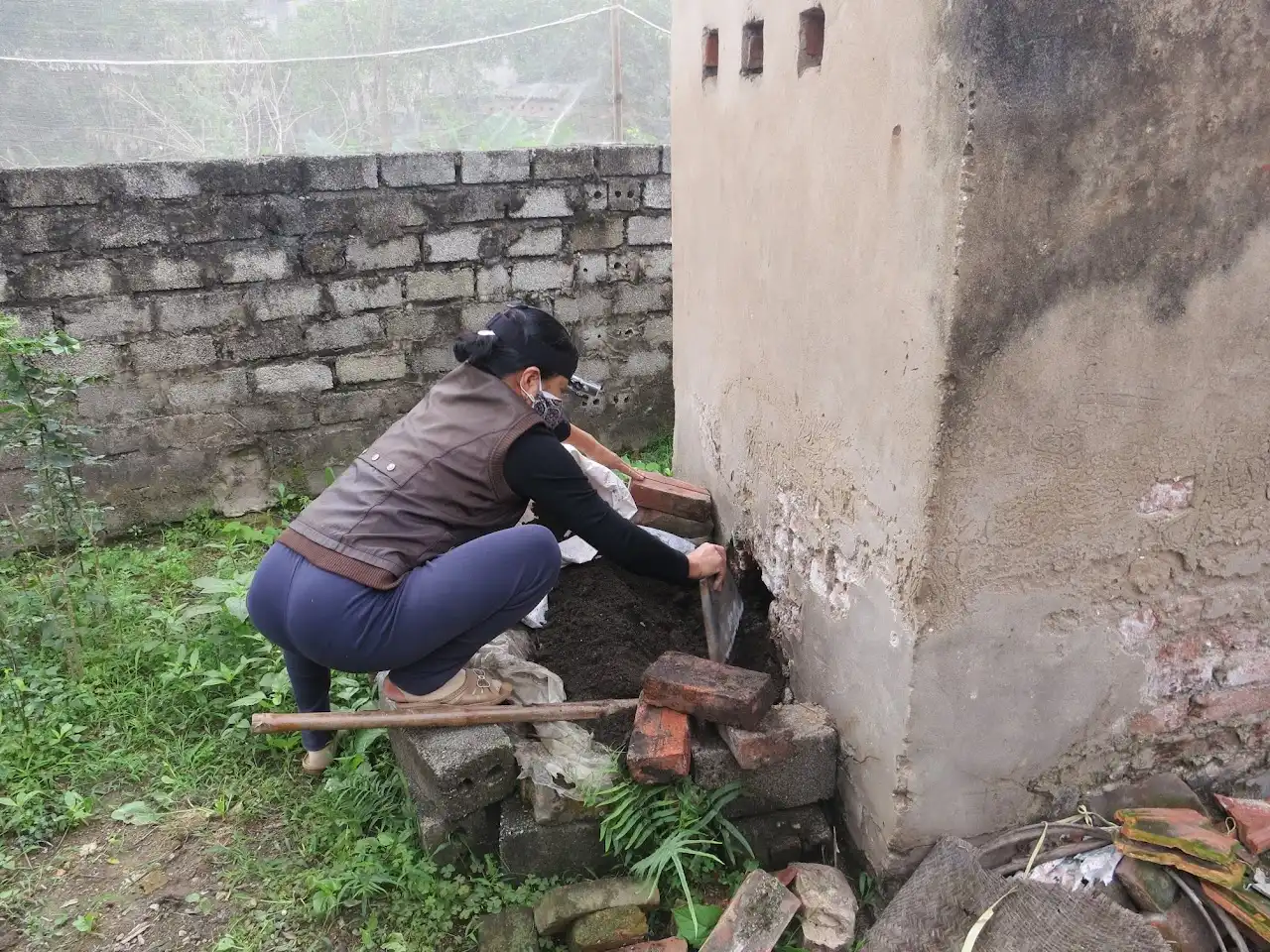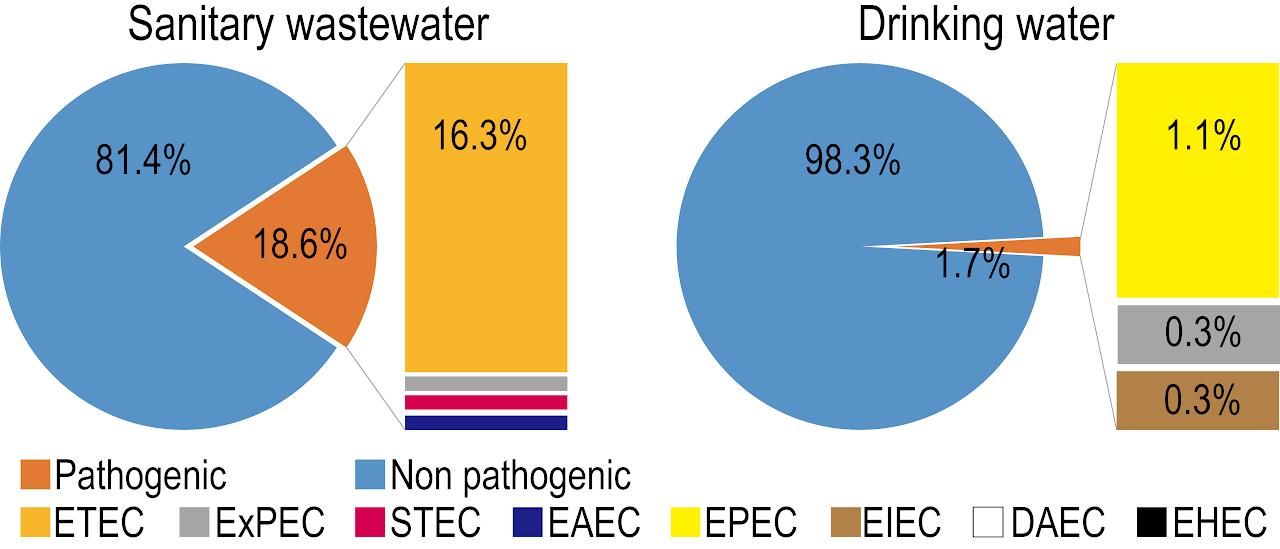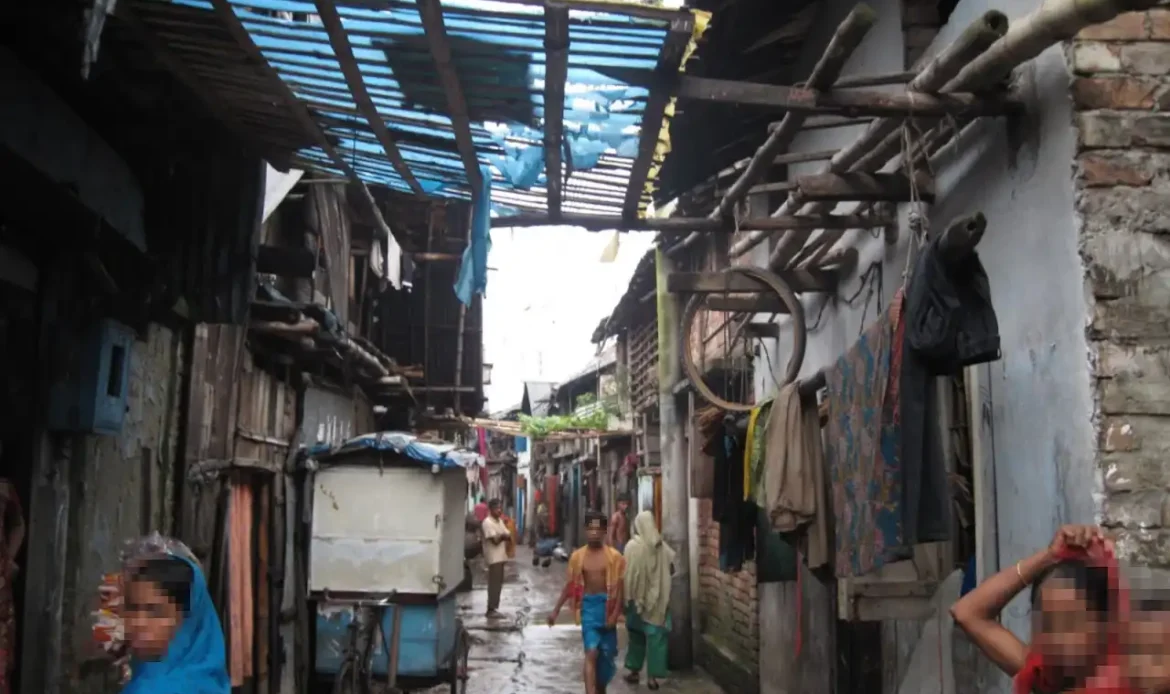NEWS! We have launched “SPLASH project”, funded by JICA and JST. Please see the website.
Harada Lab
Research Outline
Fecal exposure and diarrhea risk
In situations where water, sanitation, and hygiene (WASH) are not available and the living environment is widely contaminated, daily fecal exposure occurs through various routes such as drinking water, food, environmental water, and soil, leaving people vulnerable to sudden exposure of pathogenic microorganisms. We are analyzing fecal microbial exposure through daily life in rural Vietnam (where fecal matter is used for agriculture), urban slums in Bangladesh, and now in Zambia. The pattern of fecal exposure depends on what is contaminated, how it is contaminated, and the behavior of the people in the area. In order to answer the questions of what sources of contamination or what behaviors cause diarrhea and how to improve them effectively, we are conducting research to clarify the relationship among WASH, fecal exposure, and diarrhea risk. In addition, as a measure to improve sanitation in the community, we are not merely teaching knowledge, but also creating a participatory mechanism for local people to take the initiative in planning effective measures in diverse areas.
Visualization of Diarrhea Risks from Poor WASH Through Participatory Action Research
One of the reasons why it is more difficult to spread the use of toilets and improve sanitation than water supply is that it is difficult for people to directly perceive the health improvement effects of changes in toilet use and sanitation. It is common for people to have a cell phone but not a toilet. However, the underlying health effects, such as high infant mortality, are hidden. In this study, we will explore ways to proactively promote WASH improvement in urban slums in sub-Saharan Africa by having the residents themselves realize the health effects of WASH. In Lusaka, Zambia, we conduct action research to visualize the risks of poor WASH with a local youth club that implements environmental and health activities. They will investigate fecal contamination in their community’s living environment using a simple measurement kit, and visualize the WASH risks associated with their own lives based on the survey data using a smartphone App and videos to be developed. This will allow them to realize the health effects of fecal contamination and WASH in their immediate living environment, promote behavioral change. We will develop a methodology for planning measures to improve WASH using their own survey data.
Related Research Project
- Risk-based Participatory WASH Planning and Citizen-data WASH Statistics for African Peri-urban Settlements (SPLASH project), JST/JICA SATREPS (Science and Technology Research Partnership for Sustainable Development), FY2024-2029 (PI) WASH-related diarrhea risk structure and climate change impact in African peri-urban low-income areas, JSPS Grant-in-Aid for Scientific Research (B), FY2024-2028 (PI)
- WASH-related diarrhea risk structure and climate change impact in African peri-urban low-income areas, JSPS Grant-in-Aid for Scientific Research (B), FY2024-2028 (PI)
Harada Lab
Related Past Research Topic
Risks of traditional excreta use for agriculture in rural Vietnam
Agricultural use of human waste is one of the directions to solve water and sanitation problems by providing incentives for toilet use. However, agricultural use of human waste itself is a risk behavior because untreated human waste can contain pathogenic microorganisms. In this study, we investigated the relationship between fecal exposure and the use of human waste in a rural village in Vietnam where human waste has been traditionally used for agriculture. First-person video recordings of the use process of human fecal compost and E. coli concentration data on 19 contact media were obtained for 25 people who use human fecal compost. And, fecal transmission from media to hand to mouth was stochastically modeled. The results showed that the frequency of hand-to-mouth contact was much lower in compost users than a default frequency, and that they behaved defensively against fecal exposure, mitigating the risk to some extent. On the other hand, rare hand-to-mouth contact events occurred even when masks were worn. These indicate that the overall risk was controlled to some extent, but that rare events can lead to diarrhea.
Fecal Exposure, E. coli Pathotyping, and Microbial Source Tracking in an Urban Slum in Bangladesh
Urban slums are a major target in WASH challenges. Fecal exposure analysis was conducted among the urban slum dwellers of Khulna, Bangladesh. Our study indicated that the fecal exposure was not only due to intentional ingestion of contaminated water and food during eating and drinking, but also due to unintentional ingestion of environmental media, such as contamination of cups and dishes and accidental ingestion of water and soil during pond bathing and soil play. The results of this study indicate the importance of toilet and wastewater treatment in reducing pollution of the living environment.
Furthermore, patho-typing of E. coli in drinking water and sanitary wastewater from public toilets was carried out together with fecal source tracking using a genetic marker, H8. The proportion of pathogenic E. coli in sanitary wastewater was high (19%), suggesting that the population has a high prevalence of pathogenic E. coli. Furthermore, the pathogenic E. coli types of sanitary wastewater and drinking water were compared and found to be distinctively different. This suggests that sanitary wastewater is not the main source of drinking water contamination and that drinking water is not the main source of pathogenic E. coli in residents. Further, it is implied that the improvement of drinking water quality alone is not necessarily effective as a control measure against pathogenic E. coli for this community and that blocking exposure routes other than drinking water consumption may be effective.
